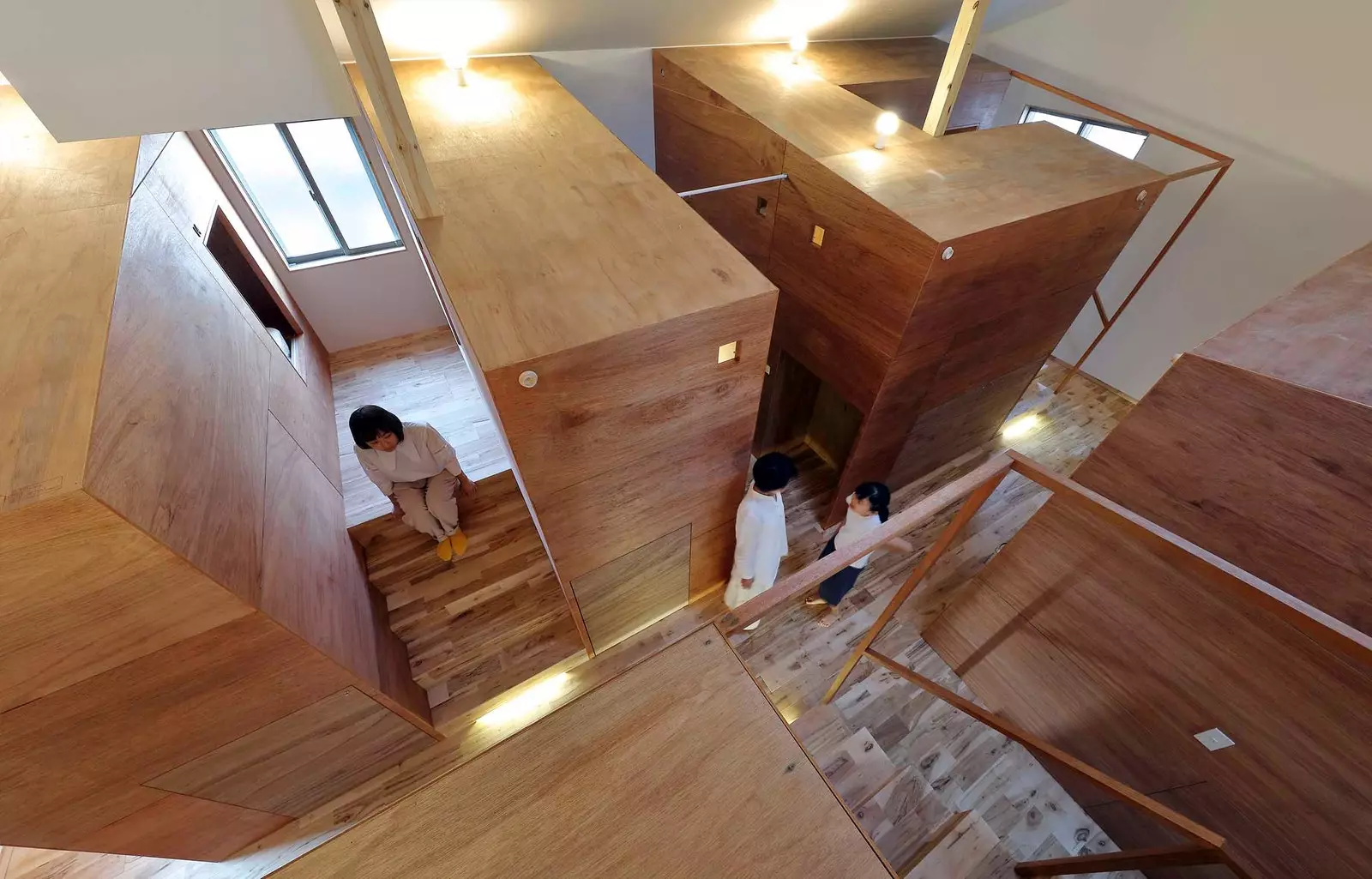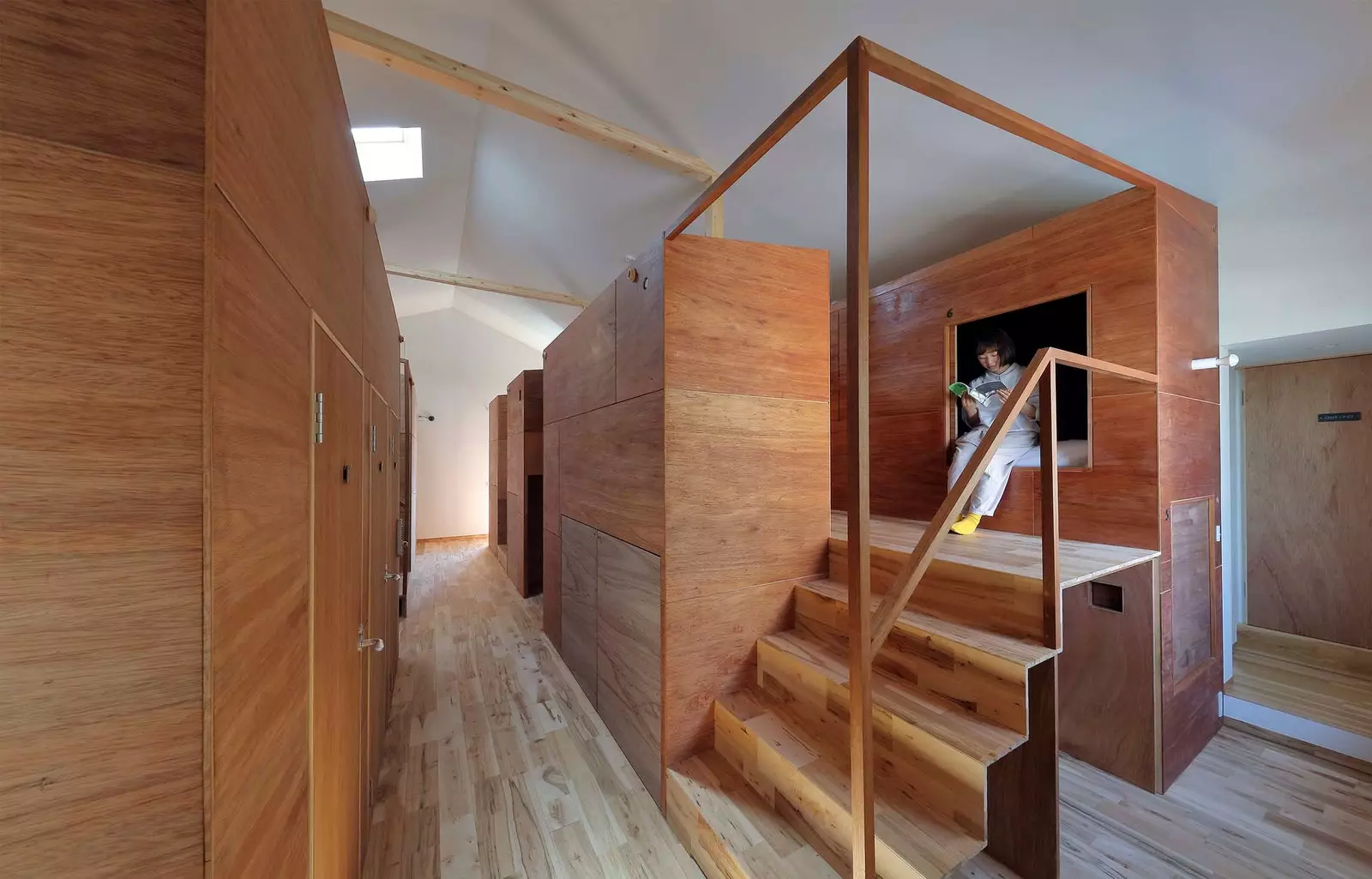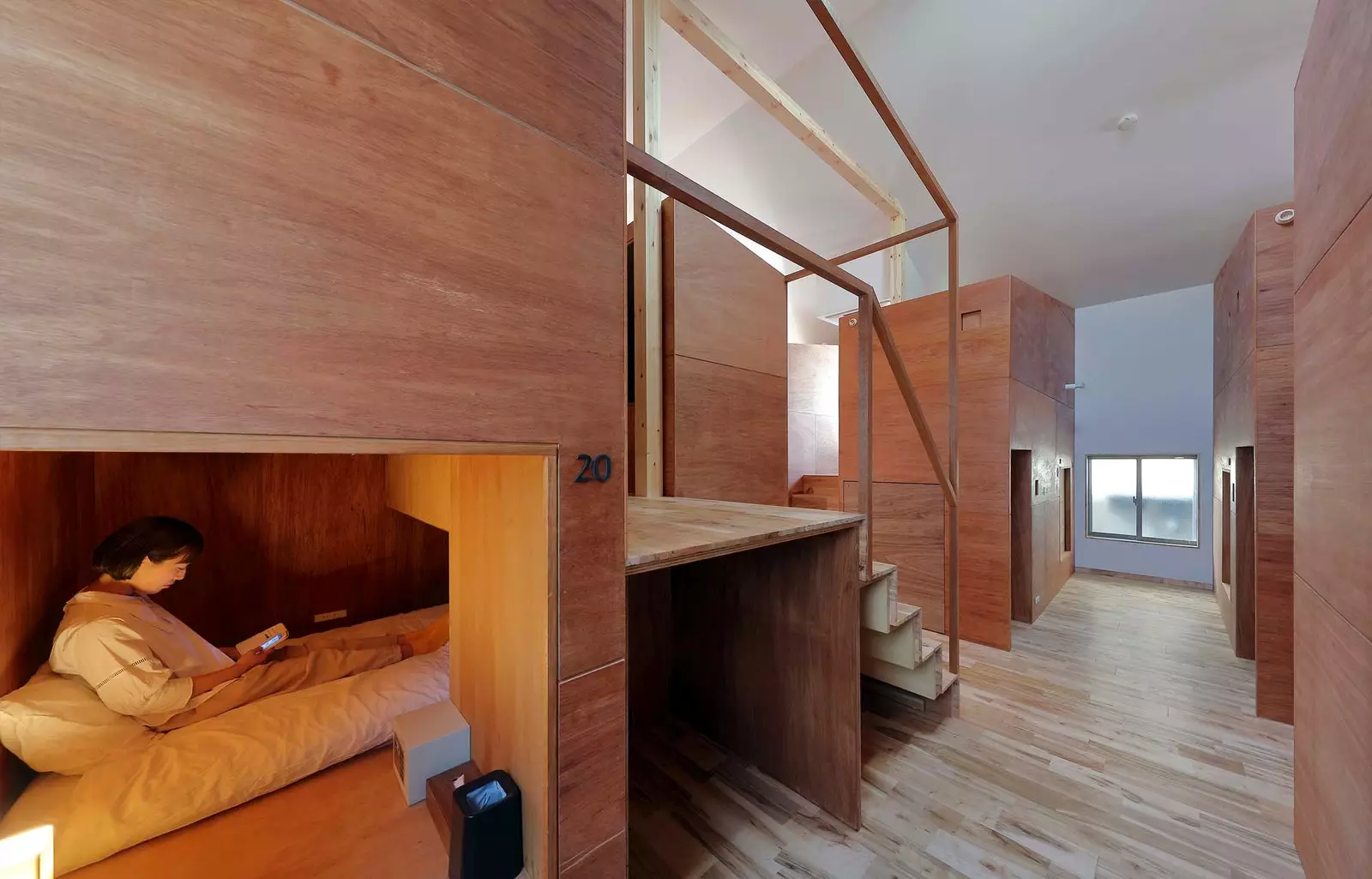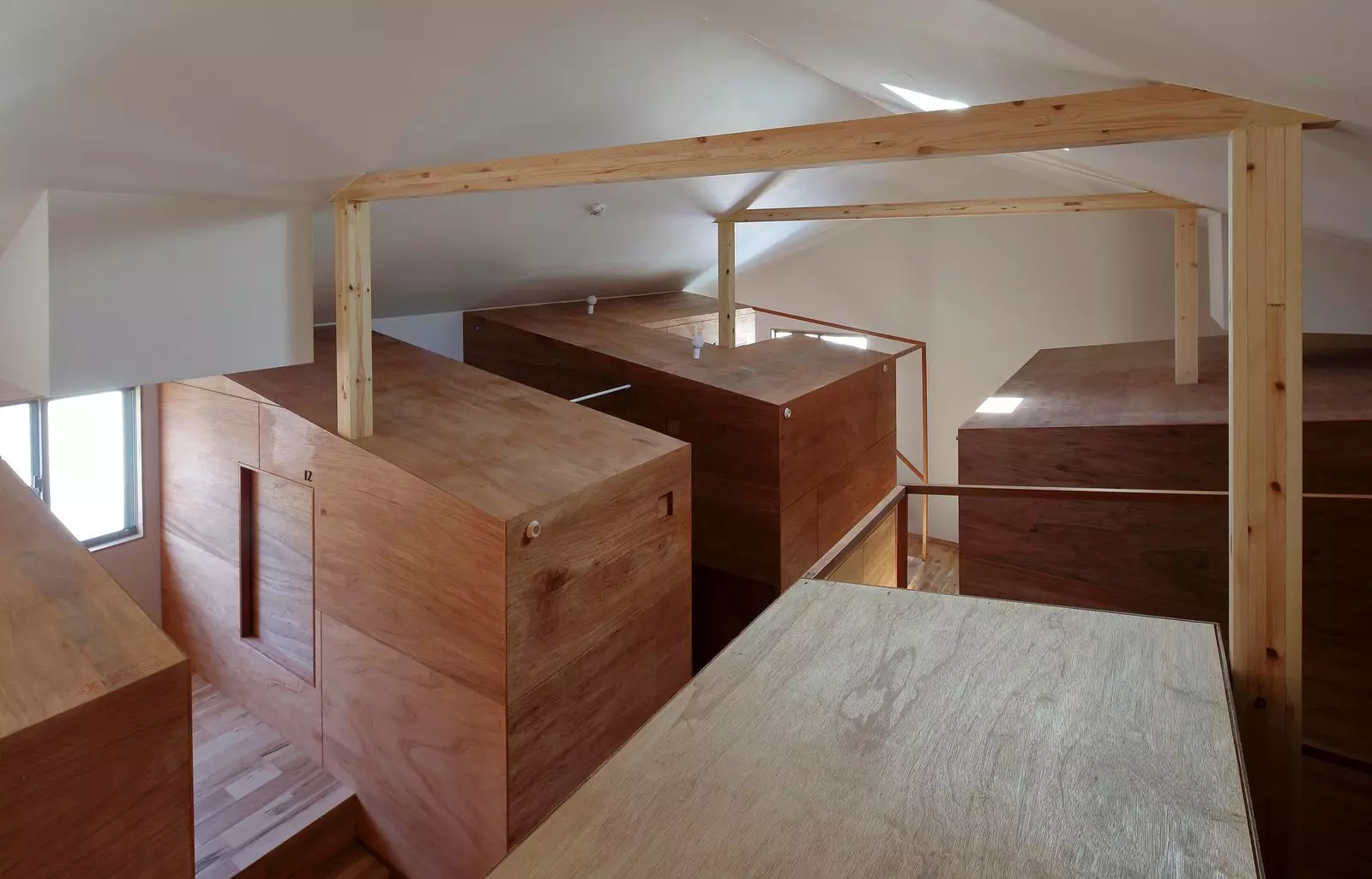
Common and private areas in a tiny space
In 1979, the metabolist architect Kisho Kurokawa designed in Tokyo the Nakagin Capsule Tower , giving rise to the world's first example of capsule architecture built for permanent and practical use. Each capsule measured 2.3 by 3.8 by 2.1 meters, and functioned as a small residence or office. They could be connected to each other and combined to create larger spaces and, in addition, they could be replaced independently if they were damaged.
After the success of this project -which, however, is today in a very poor state of conservation-, the ** capsule hotels ** arrived. They replicated the conditions of this first settlement, with everything necessary to spend the night in minimal spaces, which some would describe as claustrophobic.
That story goes back to 2012, when the Japanese architects from Alphaville designed the world's first system of communication capsules, which they implanted in the Koyasan Guest House (Wakayama), in 2012. Now, the same studio has gone a step further, completing the world's first three-dimensional capsule combination at the SUI hostel in Kyoto. Tourists from all over the world as well as friends and acquaintances of the owner, who runs a cultural hall next to the site, at the same time he works as a diving instructor, stay there.

Alphaville Architects have reinvented capsule hotels
MORE THAN CAPSULES
In this hostel, the “capsules” are placed in different ways to form semi-public areas instead of just placing the beds next to or on top of each other, as is often the case. “In front of the bed door there is an open area to create social spaces. Since there are many users who share similar hobbies, we have designed the capsule rooms on the second floor as a place where they can relax in groups, like in a small village, “they explain from Alphaville.
Additionally, the booths are arranged to have private passageways between them, similar to an alley. According to the different time zones to which each traveler belongs and his personality, these “alleys” can be group or individual , resulting in a most flexible space.
In addition to this possibility of connecting with other travelers, the architects offer Traveler other advantages of this type of accommodation, such as its high degree of soundproofing (something that, without a doubt, is not common in a hostel) and privacy, so that a team of up to 14 people can stay together but, at the same time, “separate”.

privacy and community
“In SUI Hostel you can share a large space under the same roof with a comfortable atmosphere and natural light, as if you owned a single-family house that has attached houses or shops. Also, you can enjoy the experience of share the residential space as a tourist ; this double aspect offers an interesting nuance for new traveler tastes”, Kentaro Takeguchi explains to Traveler.es.
In fact, those common spaces to which its creator alludes minimize the feeling of natural narrowness of this type of accommodation, which, even so, seems to have a reason for being beyond the need to take advantage of the space: “I have heard the testimony of many people who have slept there”, says Takeguchi. “ They rested really well in this tiny space, so it may be that there is a tendency, an instinct that we have that pushes us to inhabit very small spaces, ”he explains.
Even so, he clarifies that, for those who are really claustrophobic, there is a solution: reserve the bed separated from the rest of the spaces by a curtain , instead of by a wooden structure. Either way, you'll be living a truly Japanese experience.

An innovative system
